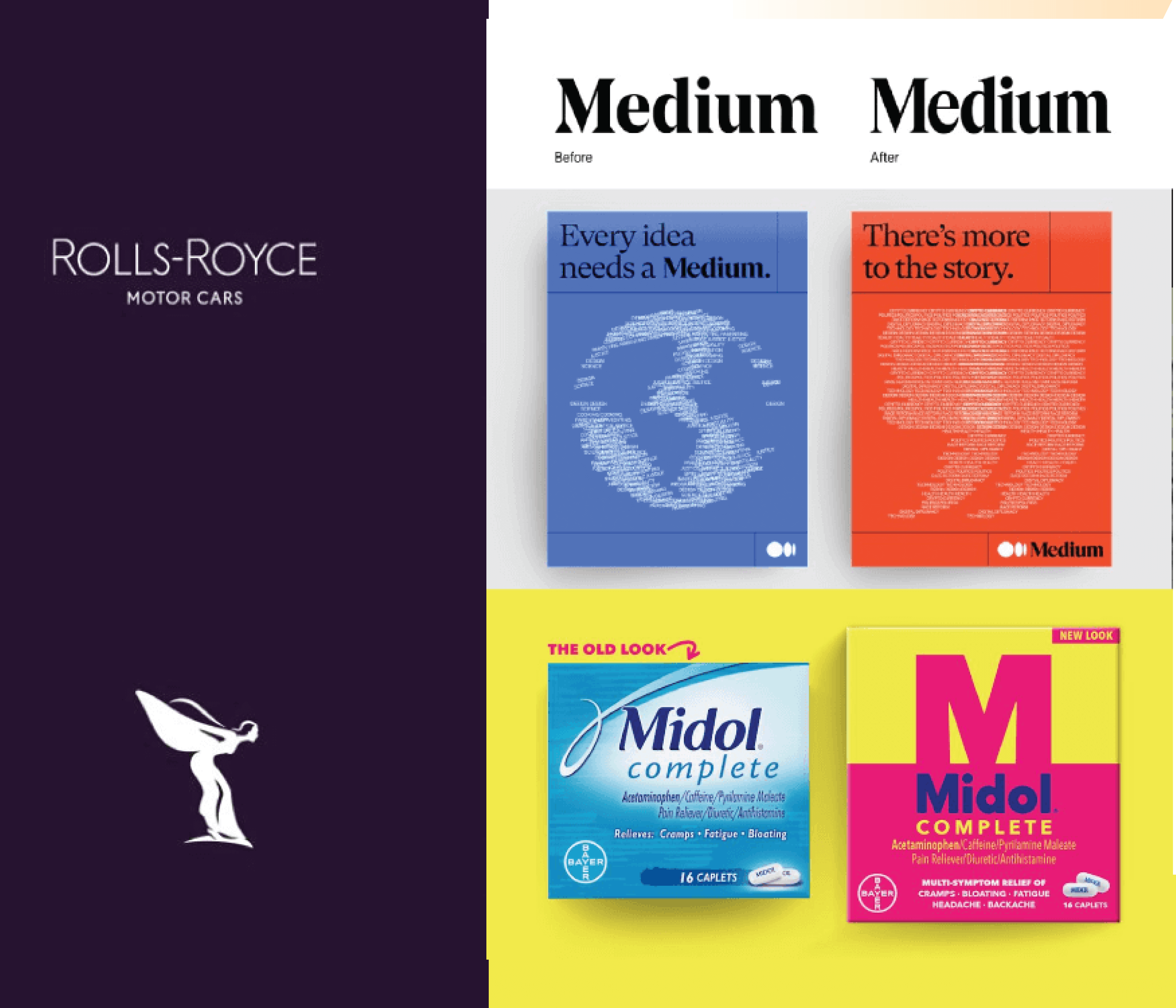Content marketing is the #1 most effective marketing strategy for demand generation (according to the Content Marketing Institute). But creating the right content for your audience is tricky. (It’s also the biggest challenge for both B2B and B2C marketers.) To be successful, you need to create consistent content that resonates—and scales. But how do you do that? Create a content marketing plan optimized for your goals.

How to Create a Content Marketing Plan
A content plan isn’t about content alone. If you want to be successful in content marketing, you need a solid strategy, infrastructure, and the skills to produce that content. Having helped thousands of clients deploy successful content strategies, we know how to build a comprehensive content plan that avoids common pitfalls and accommodates flexibility. Here, we’ll walk you through the step-by-step process to build an effective content marketing plan, including convenient tips and templates to make every part of the process easier.
Let’s go.
1) Document your goals.
Every content plan should be aligned to your goals, so it’s important to get them on paper—and make sure they’re measurable.
- Set clear objectives. Define specific, actionable objectives that your content will support (e.g., increasing website traffic, improving engagement, or generating leads).
- Establish key results. For each objective, define measurable key results that will serve as indicators of success. These should be quantifiable and time-bound, providing clear benchmarks to track your progress.
- Determine which metrics you’ll track to support your key results. If you’re not sure what those are, see our guide to choose the right metrics for your content strategy.
Tip: Things can always change, whether it’s the market or your own company’s positioning. Reassess your goals quarterly and adjust your strategy accordingly. For more guidance, find out how to set goals using the SMART method.
2) Identify your audience.
If you don’t truly understand your audience and what drives them, it doesn’t matter how much content you create. It won’t resonate, and it won’t attract the right people. Before you start brainstorming, take these steps to pinpoint your target audience.
- Conduct market research. Use quantitative and qualitative research methods to gather data about potential customers. This includes surveys, focus groups, and analysis of demographic data to understand characteristics such as age, gender, location, and income.
- Analyze internal customer data. Look at your existing customer base to identify common traits and behaviors. Analyzing data from CRM systems, website analytics, and social media can provide insights into who is currently engaging with your brand.
- Create your personas. Create detailed personas that encapsulate the demographic, psychographic, and behavioral attributes of your ideal customers. This helps you tailor content and messaging that resonates with different segments.
Tip: B2B brands can also benefit from creating Ideal Customer Profiles, which identify the types of businesses you want to target. See our guides to create ICPs and target personas.
3) Identify your story pillars.
Your brand story is comprised of many parts of your identity: who you are, what you do, how you do it, etc. Identifying these strands of story DNA is crucial to help you tell consistent, cohesive, and—above all—relevant stories to your audience. In addition to your brand heart (aka purpose, vision, mission, and values), tagline, and value proposition, we recommend choosing 3-5 story pillars. These are, essentially, the core themes or selling points that define your brand.
If you don’t know what these are, here’s how to find them.
- List your key differentiators. Start by evaluating your brand’s unique attributes and strengths. These should set you apart from competitors and support your brand’s tagline.
- Choose 3-5 core differentiators. Narrow your list down to only the most relevant and compelling differentiators. These will serve as your key messaging pillars.
- Add supporting points. For each pillar, create at least three talking points. These can also include catchy phrases or keywords that you will weave into all your content, whether on product packaging or social media.
Tip: Make sure your story points are unique and distinct from each other. (You may need to combine some if they’re too similar.) Document this information using our free brand messaging template so that all content creators have a convenient guide to reference for consistency.
4) Choose your distribution platforms.
No matter what content you create, you want it to be seen by the right people, so you need to choose your distribution channels wisely. (These channels can also greatly influence the type of content you create.)
Look back at your target audience and consider:
- Where do they get their news?
- What sites do they frequent?
- What social platforms do they enjoy?
- Which platforms do they spend the most time on?
- What formats (e.g., video, photo, articles) do they like to engage with on those platforms?
Tip: One of the most common mistakes brands make is trying to do too much on too many platforms. It’s better to deploy a strong strategy on a few key channels, then scale from there. You should also evaluate the cost and resources required for each channel. Some channels may require more investment in terms of time, money, or expertise. If you’re not sure what’s right for your brand, see our tips to determine the right channels for your goals.
Also, most brands only think about marketing to their consumer audience, but it’s also important to promote your employer brand to make you attractive to future employees. See our guide to prompt your employer brand through your content.
5) Brainstorm your content ideas.
If you want to create head-turning content, you need to tap into your creativity, experiment, and take risks.
- Pinpoint powerful emotions. Emotions are a powerful way to connect with your core audience. What do you want them to feel? Joy? Fear? Excitement? Relief? Try these tips to turn their emotions into A+ content.
- Push the envelope. Marketing can be dull and dry, so you can make a huge splash if you create content that is funny, edgy, or provocative. (This is especially true in B2B marketing.) Try these tips to come up with ideas that aren’t boring.
- Set restrictions to enhance creativity. Sometimes placing limitations can encourage innovative thinking. We find it helpful to brainstorm ideas within each story pillar. This ensures your ideas are on-brand while providing proper guard rails.
- Look at news and trends. Sharing your thoughts on topical subjects is a great way to join public discourse (and it can even help you get featured in industry publications). But make sure you’re joining these conversations appropriately. See our tips to avoid newsjacking like a jackass.
Tip: No matter what story you’re telling, it’s crucial to deliver that story in the right format. (This is also why it’s important to know which distribution channels you’re targeting/what formats are best for them.) For example, video is great for Instagram, while longer thought leadership articles are better for LinkedIn. Find out more about the different types of formats and when to use them.
6) Build your editorial calendar.
If you want to bring your content plan to life, you need a comprehensive editorial calendar to keep track of all the moving parts.
- Identify your publishing cadence. Determine how frequently you’ll publish content—daily, weekly, or monthly. We like to schedule content by month to improve production efficiency, account for holidays, and allow for flexibility if unexpected events happen.
- Fill in content ideas. Add topics, titles, and themes, as well as significant events, holidays, and launches to create content around. Use our free editorial calendar template to get started.
- Determine publish times. Analyze when and how often your audience engages with your content. Tools like Google Analytics or social media insights can reveal patterns in when your audience is most active.
- Assign roles and deadlines. No matter how large or small your team is, you need to have the right roles covered (even if one person handles multiple responsibilities). Find out what you need to create a strong content marketing team, and make sure every member is aware of their responsibilities and deadlines.
Tip: There are plenty of tools to help you manage your editorial calendar/project workflows. See our roundup of the best content marketing tools to make life easier.
7) Optimize your infrastructure.
When we see clients struggle to create effective content marketing, it’s usually because they simply don’t have the skills or infrastructure in place to scale quality content.
- Create proper timelines. Include each stage (e.g., copy, design, storyboards), including stages for review and revisions. (Do not move on until you have sign-off on each stage.) This prevents delays and enhances team accountability, from first draft to final publication.
- Assess your current workflow. Project postmortems are a great way to identify bottlenecks, inefficiencies, or recurring challenges across the organization.
- Streamline brainstorming sessions. Use AI prompts and templates to generate numerous ideas quickly. (Try our free template to brainstorm 30 content ideas in under an hour.)
Tip: Just because you’ve done something one way doesn’t mean it’s the best way to do it. Be open to new ideas and experimentation. Whether you’re exploring what AI can do or trying a new test-and-learn approach, stay curious and open to trying new things. For more ways to work smarter, see our complete guide to master content creation.
8) Measure your results.
The best content plans are data-driven and optimized accordingly. As you begin to launch your content, monitor its success to see what’s working and what’s not.
- Test your tracking tools. You already know what metrics you want to track, but double-check that you have the appropriate infrastructure set up (e.g., Google Analytics, social media insights) to collect and analyze data consistently.
- Create regular reports. Review your collected data to evaluate content effectiveness. Identify trends, areas of improvement, and successful content pieces.
Tip: Avoid vanity metrics in your reporting mix. Focus on data that offers actionable insights.
How to Make Sure Your Content Plan Works
If you’ve followed these steps, you should have a complete and comprehensive plan to drive your success. But don’t fall into the quantity-over-quality trap so many marketers fall victim too. Just because you have a plan in place doesn’t mean it’s perfect. Content marketing is a never-ending game of testing, revising, and re-deploying. But there are some things you can do to make sure you keep a leg up.
- Follow best practices. From SEO and copywriting to design and paid media, stay educated about the latest trends in marketing and content.
- Build a complete content strategy. There are more pieces you need to consider when it comes to content marketing. Use our free content strategy toolkit to make sure you’ve covered all your bases.
- Lean on experts. If you need a helping hand to bring any portion of your content plan to life, find the right content marketing agency for you. See our tips to find the perfect partner, or find out what it’s like to work with us.
Most importantly, don’t get discouraged if your plan doesn’t give you the results you want immediately. Content marketing takes time to get right, and there are always ways to improve. Hang in there, keep an eye on your metrics, and optimize, optimize, optimize.
Good luck.





